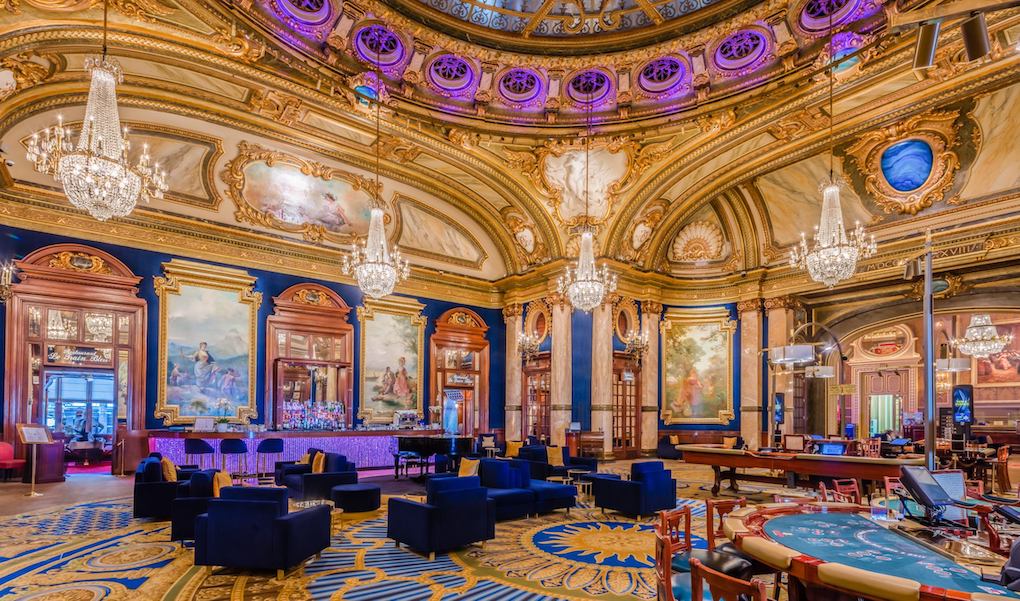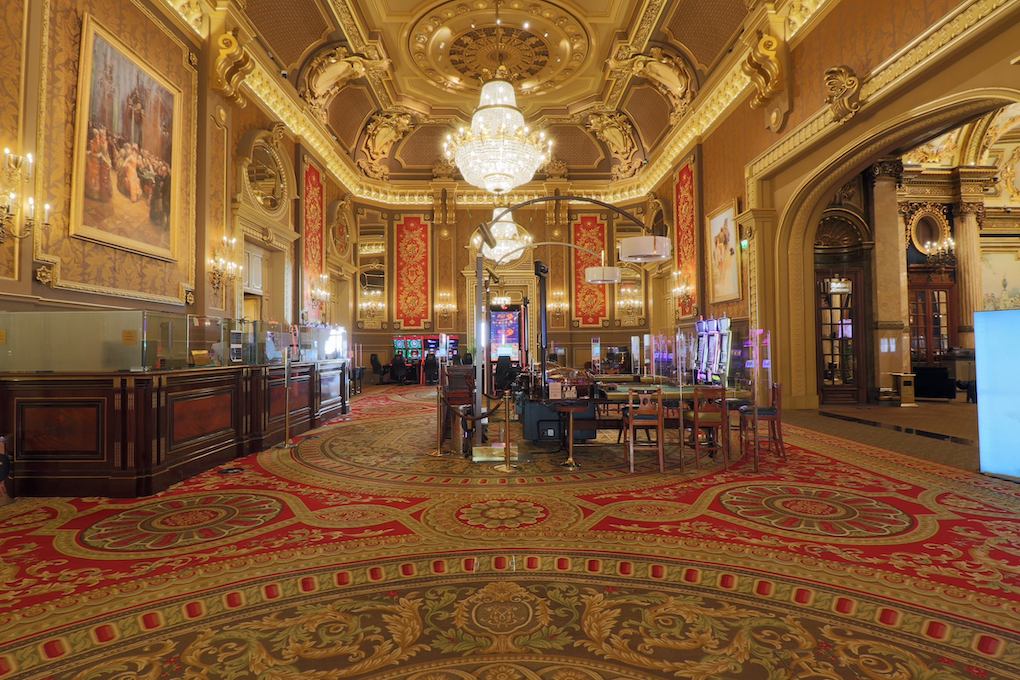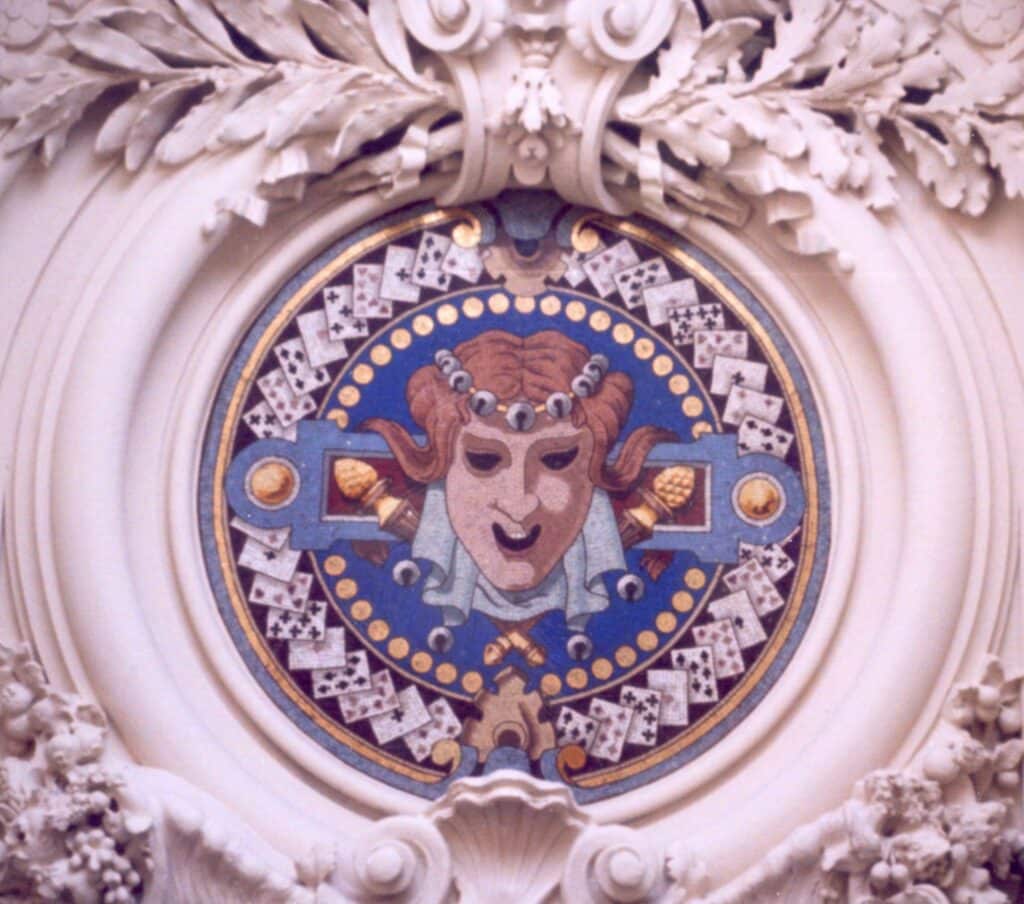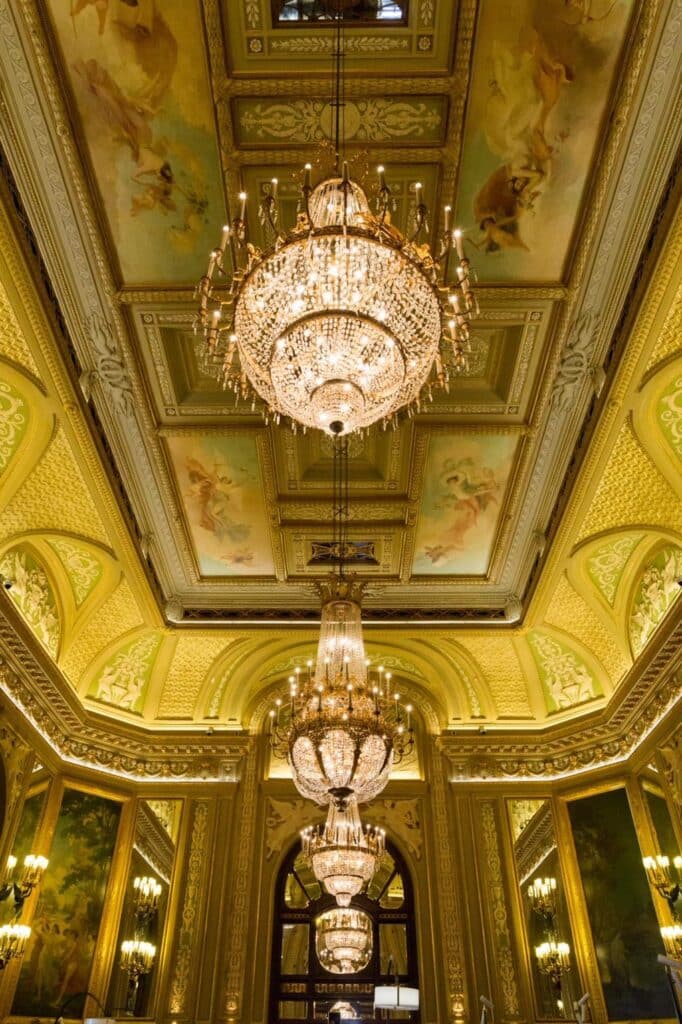Revealing the secrets of Monte-Carlo Casino’s paintings

Monaco Tribune takes you on a tour of this unique establishment and shares some of its stories.
It is one of the most iconic tourist spots in the Principality. Monte-Carlo Casino, jewel of the Société des Bains de Mer and its heritage. Its Belle-Epoque façade is as impressive as the elegance and refinement of its gaming rooms.
But inside, several eyes seem to be watching the players and the tourists. Large colourful canvases adorn the walls and ceilings of this sumptuous building. The brushes were held by a number of artists who worked between 1863 and 1910. The different styles and influences coexist seamlessly, since all the works have a common thread: the female form.
Charlotte Lubert, SBM’s Heritage Manager, invited us to take a tour of the building and discover the secrets behind the Casino’s paintings.
The majestic Salle Europe and the mysterious Salon Rose
Our visit begins in the cosy atmosphere of the Salle Europe, which contains a lounge bar and a number of gaming tables. “Each room, except the Salle Médecin, contains works by several painters. Here, for example, we have Paul Steck, Pedro Ribera, Georges Picard and Félix-Hippolyte Lucas,” Charlotte Lubert informs us. All of these French artists, who were awarded medals for their work, were carefully selected by Marie Blanc, a woman who was internationally renowned for her taste in art and refinement.
All of the eight paintings depict women, but that’s not all. All of them are also allegories of nature. “On either side of the entrance, Steck painted La Récolte des Oranges (Orange Harvest) and La Promenade en Mer (A Walk by the Sea). (…) These paintings date from 1898, when the room was last renovated,” explains Charlotte Lubert.

Opposite, L’Automne (Autumn) and Le Printemps (Spring) (1889) by Georges Picard, greet visitors who wish to go through to the other rooms in the Casino.
In the lounge bar, near the prestigious Le Train Bleu (Blue Train) restaurant, Félix-Hippolyte Lucas suggests we take a walk in the Alps or by the sea.

As we look up, we can see two other works by the painter, on either side of the impressive glass roof: one is an allegory of painting, the other of music. If you look closely at the canvas above the bar, you can see a medallion with the face of the architect Henri Schmit, who was the SBM’s General Manager of architectural works at the end of the 19th century.
And on the other side, to decorate the entrance to the Salon Rose (Pink Room), we discover the works of Ribera: the Bataille de Fleurs (Flower Battle) and Sur les Terrasses (On the Terraces). “Here, the woman has something of the Pompadour about her, which is quite amusing for the time. After all, this is the Belle Epoque, under Napoleon III,” comments the heritage manager.

And we continue into the Salon Rose, a restaurant that feels like a charming little boudoir. Built in 1903, it was originally used as a smoking room. This is why the large ceiling was decorated in brown tones, to hide the smoke. But this ceiling also holds a rather… unusual secret!
“We are all familiar with the Mona Lisa, with her mysterious gaze that follows us as we move around,” Charlotte Lubert begins. “Well, our Mona Lisa is in here.”
Could she mean the innocent eyes of the little angel we spot, or the more lascivious gaze of Les Fumeuses (Female Smokers), painted by the Italian Massimiliano Gallelli? The answer lies elsewhere. Surprisingly, we’re talking about the buttocks belonging to the cherub that has its back to us. “No matter where you are in the room, the buttocks will be pointing in your direction,” reveals our guide.

After a thorough investigation into the matter, we return to the Salle Europe, where we are surrounded by ‘bull’s-eyes’, which are no longer in use but which used to serve as discreet observation posts. “Today we have surveillance cameras, but at the time, Camille Blanc [son of François Blanc, creator of the SBM, Ed.] loved to hide in there to watch what was going on. He used to watch the staff and players, and could see without being seen,” Charlotte Lubert smiles.

The resonant Salle des Amériques and the discreet Salle Blanche
Let’s move on to the Salle des Amériques (Americas room), designed and built by the famous Charles Garnier, which is a little surprising as it seems more modern in appearance than the previous ones. And with good reason: although built in 1881, it contains mainly copies of the works of art on display, the originals having unfortunately been destroyed in the 1960s.

In 1969, the room hosted the Bal des Têtes, a masked ball to inaugurate its new guise. The event was attended by major celebrities, who were invited to dress in extravagant hats and masks. The masks on the ceiling represent the four seasons.
Past and present festivities that contrast with the elegant Salle Blanche, to the side.
Built in 1903, this bright, understated room overlooking the sea was not always frequented by the players. Originally, this is where their companions came to relax as they waited for those who preferred the excitement of the green baize. This former reading room is dominated by a huge painting of three naked women dancing: the Grâces Florentines (Florentine Graces), immortalised by the painter Paul Gervais.

Featuring, instead of the goddesses of Greek mythology – Aglaia, Euphrosyne and Thalia – the “socialites” of Monte Carlo: Liane de Pougy, Emilienne d’Alençon and the very famous Belle Otéro.
“The painting caused quite a scandal at the time. People were not used to seeing such nudity,” says Charlotte Lubert. It is true that the bodies are on full display, with no attempt to veil or conceal them, but they still have grace and femininity.
The amusing Salles Touzet and restful Salle Médecin
The visit continues in the Salles Touzet (named after their architect), or Twin Rooms, whose vestibule (formerly a conversation vestibule) contains a strange mosaic figure by Facchina, announcing a transition to the private rooms.

The two richly decorated Touzet rooms are perfectly symmetrical and seem identical… but for a few details.
Starting with the glass roofs where the inscriptions “1889”, the date of the room’s construction, are not reflected. These skylights, by Maison Prestat et Cie of Paris, are simply reversed.

Still on the ceiling, you can also see six female portraits (three on each side) in stained glass. Although all these women look impassive, it seems that they in fact portray different emotions.

Lower down, paintings adorn the walls and echo the call to nature. Flowers, trees, rivers, but also peacocks, birds and swans accompany the young women on the canvases of the painters Charles Monginot, Tony Faivre and Léon Hodebert.

Surprisingly, one of the walls also has… a clock! “Generally speaking, there are no clocks in casinos, since the idea is for players to lose track of time and play longer. But there is one here, because at the time it was important that the players did not miss the last train home,” says Charlotte Lubert.

And time is in the spotlight in the prestigious last room on our tour: the Salle Médecin, reserved for the Casino’s biggest players. This is also where most of the competitions and tournaments take place, both for players and dealers.
Built in 1910, the Salle Médecin has the particularity of being the only room designed by a Monegasque architect, whose name it bears.
On the walls, the works of a single painter, Armand Segaud, illustrate different times of the day: morning, noon, evening and night.

The bas-reliefs are the work of Emile Peynot. The Greek god of the sun, Helios, is shown driving his horse-drawn carriage, and in a mirror image, his sister, Selene, goddess of the moon, is shown riding in her ox-drawn chariot. The ceiling, with its flying angels and young girls, was also created by Armand Segaud and invites us to lose ourselves in this paradise.



And on that ‘heavenly’ note, we end our visit to the Monte-Carlo Casino. A historical venue where players and visitors can dream…









